How the police showdown at Columbia University unfolded
The first sign that the weekslong standoff at Columbia University was nearing a dramatic finale came after dusk, when New York City police officers clad in riot gear began massing south of the east gate of the venerable Ivy League school.
It was around 9 p.m. Tuesday and the pro-Palestinian protesters standing in front of the wrought-iron gate could see the police gathering, and they were defiant.
“We will not move. We will not bend,” they chanted. “The occupation has to end.”
The protests had erupted April 17 when students — demanding a cease-fire in Gaza and insisting that Columbia divest from corporations that could be profiting from the war — set up 50 tents on campus and refused to leave. The police cleared them out the next day, but the protesters returned.
This time, the NYPD was back at the request of school administrators after a group of protesters had taken over Hamilton Hall, an on-campus building beside the gate at Amsterdam Avenue and 116th Street.
Preparing for a long occupation, the protesters had festooned the facade with pro-Palestinian banners, set up a rope system by which they would get supplies into the building and renamed the building Hind's Hall after a 6-year-old Palestinian girl who was killed in Gaza.
Three hours earlier, at about 6 p.m., Mayor Eric Adams and top NYPD brass declared that “professional outside agitators” had most likely engineered the seizure of the ornate building.
“This must end now,” Adams said.
Adams, himself a former NYPD police officer, presented no proof at that moment that somebody off campus was pulling the strings of the students, who had, for weeks, repeatedly rebuffed the university’s calls to end the protests.
As of Wednesday, city officials had identified only one person who might have been involved in the Hamilton Hall takeover, and she has not been arrested.
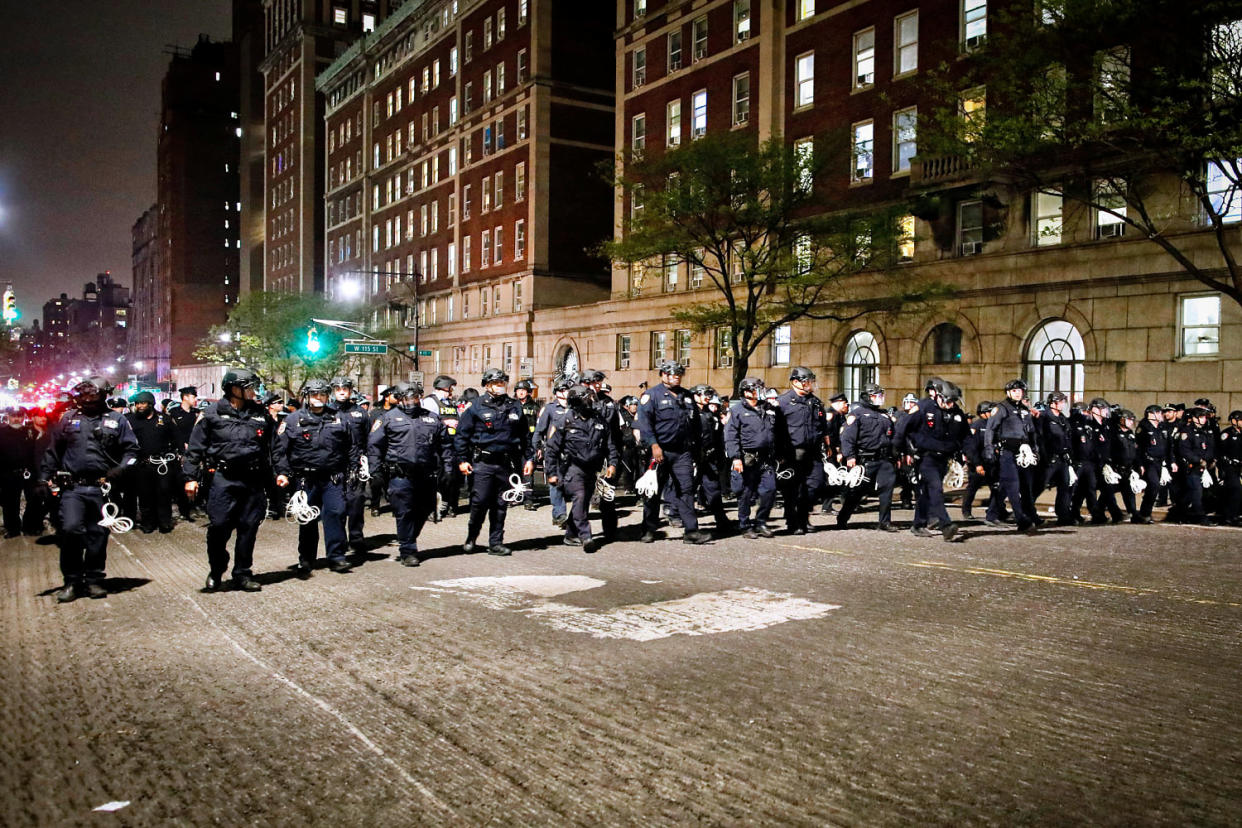
But the die had been cast.
Within hours, Columbia would become the setting for a confrontation that ended before midnight with police carting more than 100 protesters off to jail, 40 to 50 of whom had been in Hamilton Hall, which after the protest and raid was left in shambles.
Another police action almost simultaneously at City College of New York resulted in the arrests of more than a hundred more protesters. Final data on the total number of people who were arrested and their university affiliations is pending.
“It’s unconscionable,” said Debbie Becher, a sociology professor at Barnard College, which is part of Columbia, as the police rousted the protesters from Hamilton Hall. “They’re sending hundreds of police after our students.”
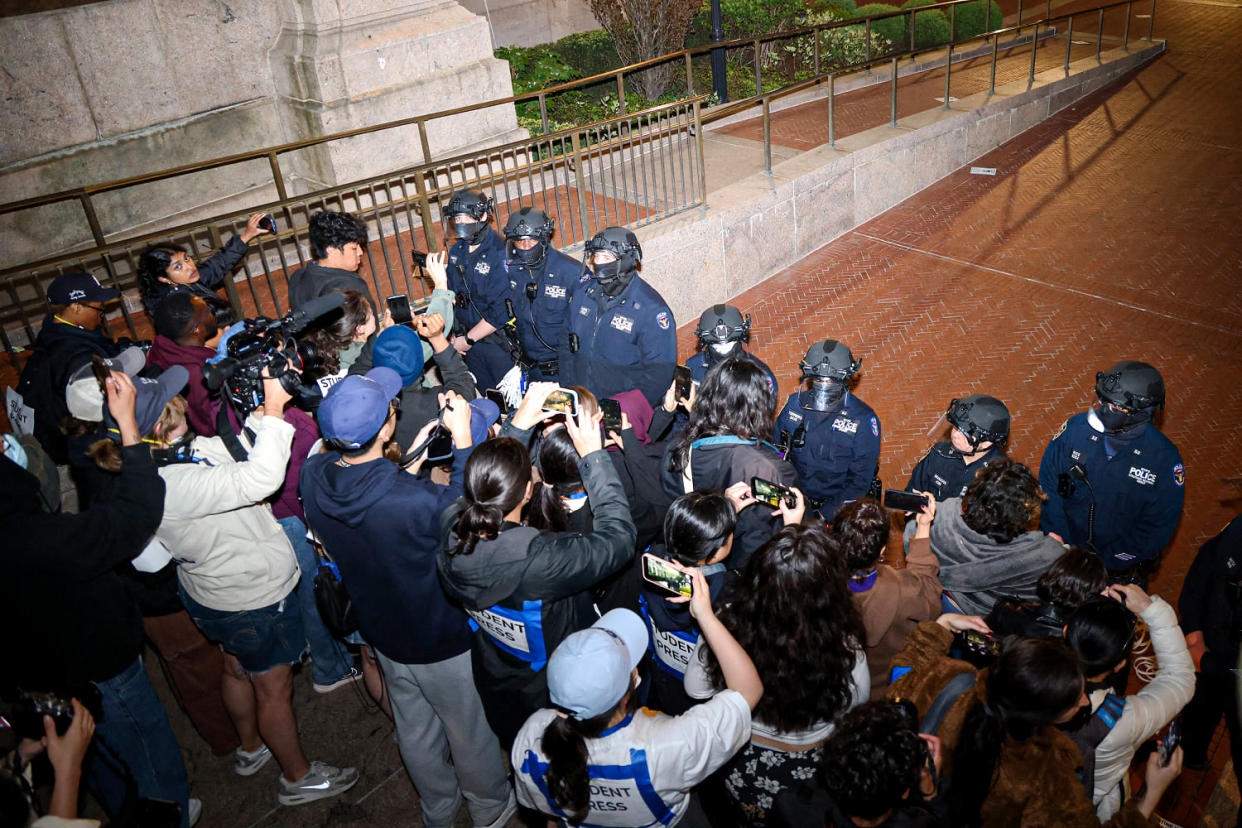
In a statement, Columbia said the takeover of Hamilton Hall overnight Monday was the final straw.
“We regret that protesters have chosen to escalate the situation through their actions,” it said Tuesday. “After the University learned overnight that Hamilton Hall had been occupied, vandalized, and blockaded, we were left with no choice.”
Police and protesters collided for the first time at 9:01 p.m. Tuesday, three blocks south of the gate at 113th Street and Amsterdam Avenue, where the police had erected barricades, according to NBC News reporters on the scene.
"Free Palestine! Free Palestine!" the protesters chanted as the police officers drew closer, many of them holding plastic zip ties.
Then police ordered them to leave.
“If you refuse to disperse, you will be placed under arrest on the charge of disorderly conduct,” the disembodied voice echoed through the street.
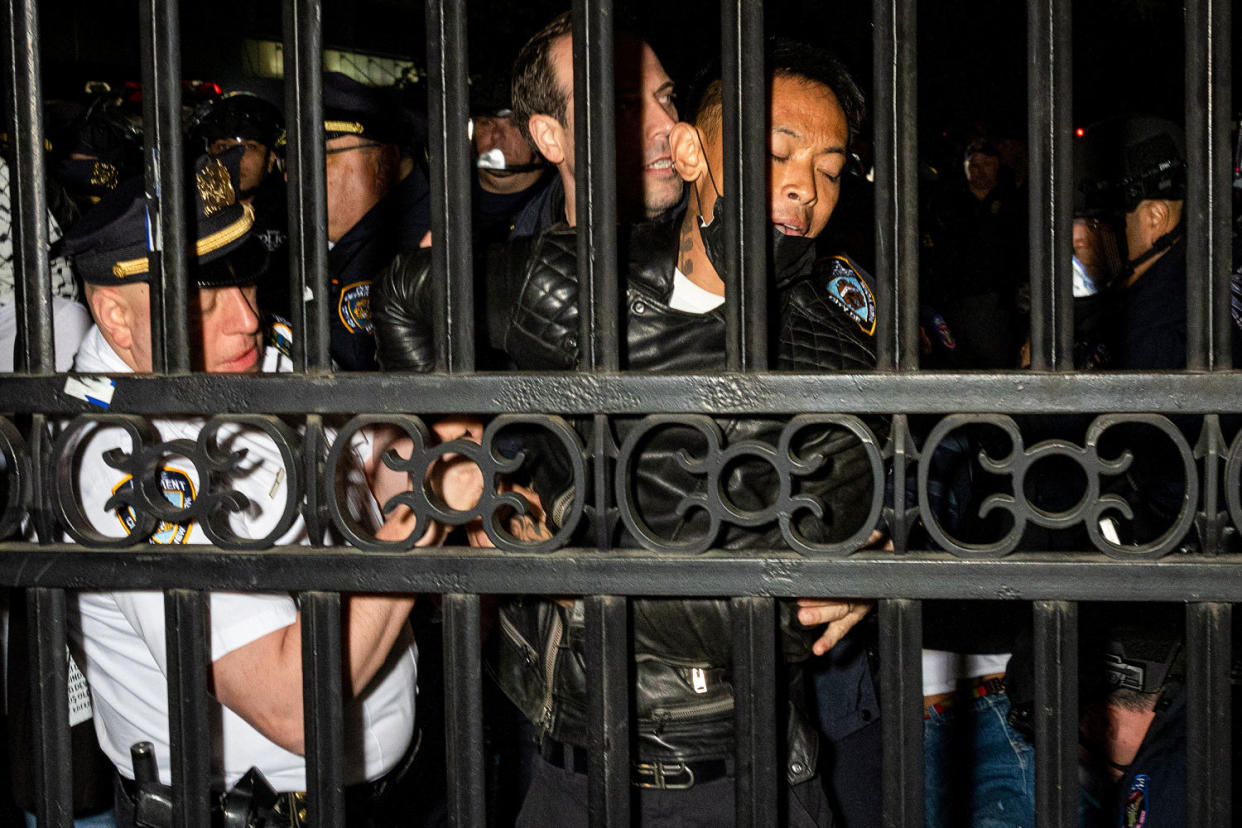
While protesters heckled the police and yelled "Shame! Shame!" the first phalanx of officers who got to the intersection began cuffing their hands behind their backs with the zip ties.
Four minutes later, at roughly 9:05 p.m., when a much bigger contingent of police in riot gear came marching up Amsterdam Avenue, the angry cries of protesters turned into a roar.
Some tried to use the barricades police had erected earlier to pen them in to keep the approaching officers from advancing, to no avail. Others formed human chains and collapsed on the pavement to make it harder for them to be moved.
"I watched as the police kenneled us in and began brutally pushing, shoving us," said protester Soph Askanse, a junior who is Jewish. "One of them elbowed me in the chest trying to force us apart. "
By 9:12 p.m., the police breached their own barricades and were nearing the east gate of the campus at Amsterdam Avenue and 116th Street. By 9:18 p.m., they were face to face with the protesters gathered by the gate.
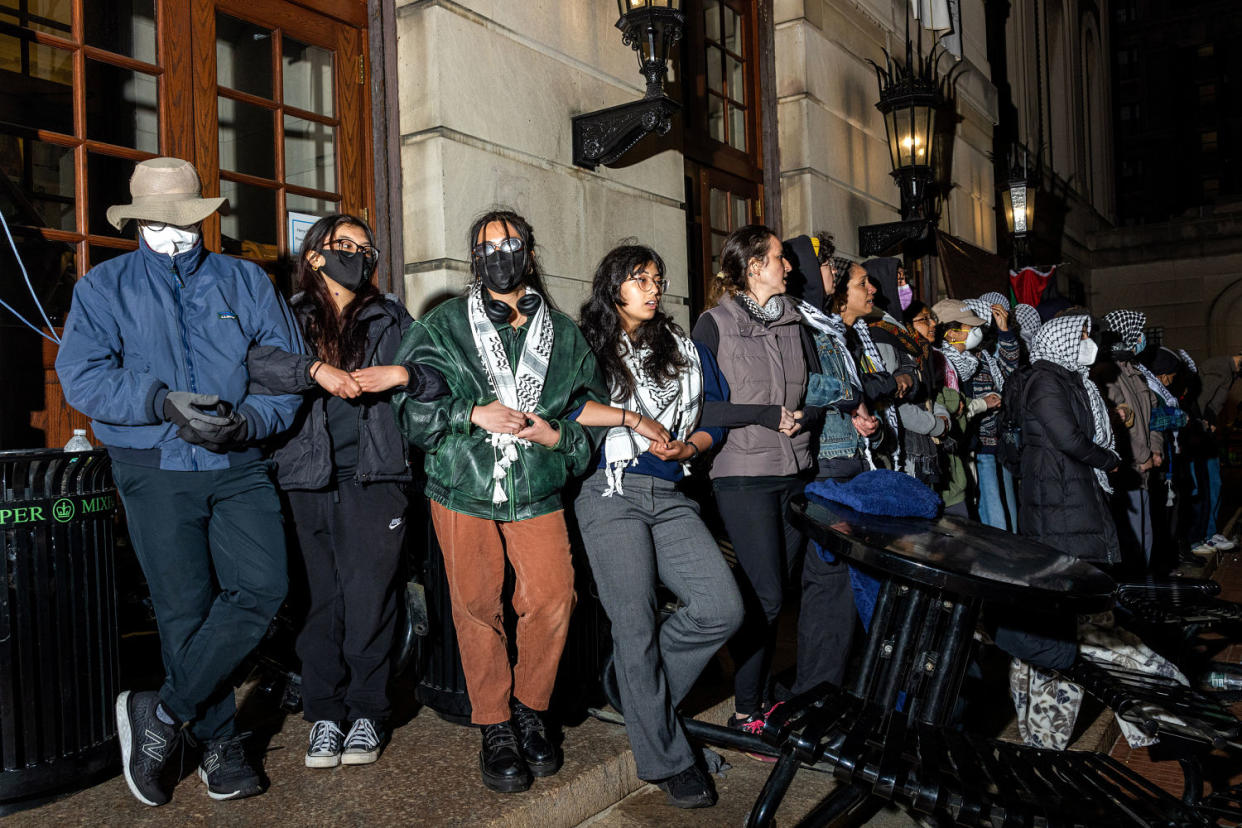
For about two minutes, the sides stared each other down.
Fifty-six years earlier, Columbia students protesting the Vietnam War had occupied Hamilton Hall and clashed with police near this very spot. Back then, the police fought their way up the steps of the stately building to roust the protesters holed up inside.
On Tuesday, as night fell, protesters linked arms outside Hamilton Hall and listened as one of their own sang. By the time police arrived, the protesters held a Palestinian flag in the middle of their ranks and chanted as officers cleared bystanders from the steps.
The NYPD breached the building using a flash-bang device to roust the 40 to 50 protesters on the first floor who had barricaded the front door with furniture.
The NYPD’s Emergency Service Unit also used an armored vehicle that was equipped with a MARS — a Mobile Adjustable Ramp System — sending another group of officers to gain access to the upper floors of Hamilton Hall. In helmets and bulletproof vests, they filed inside a second-floor window, one after another, starting around 9:20 p.m.
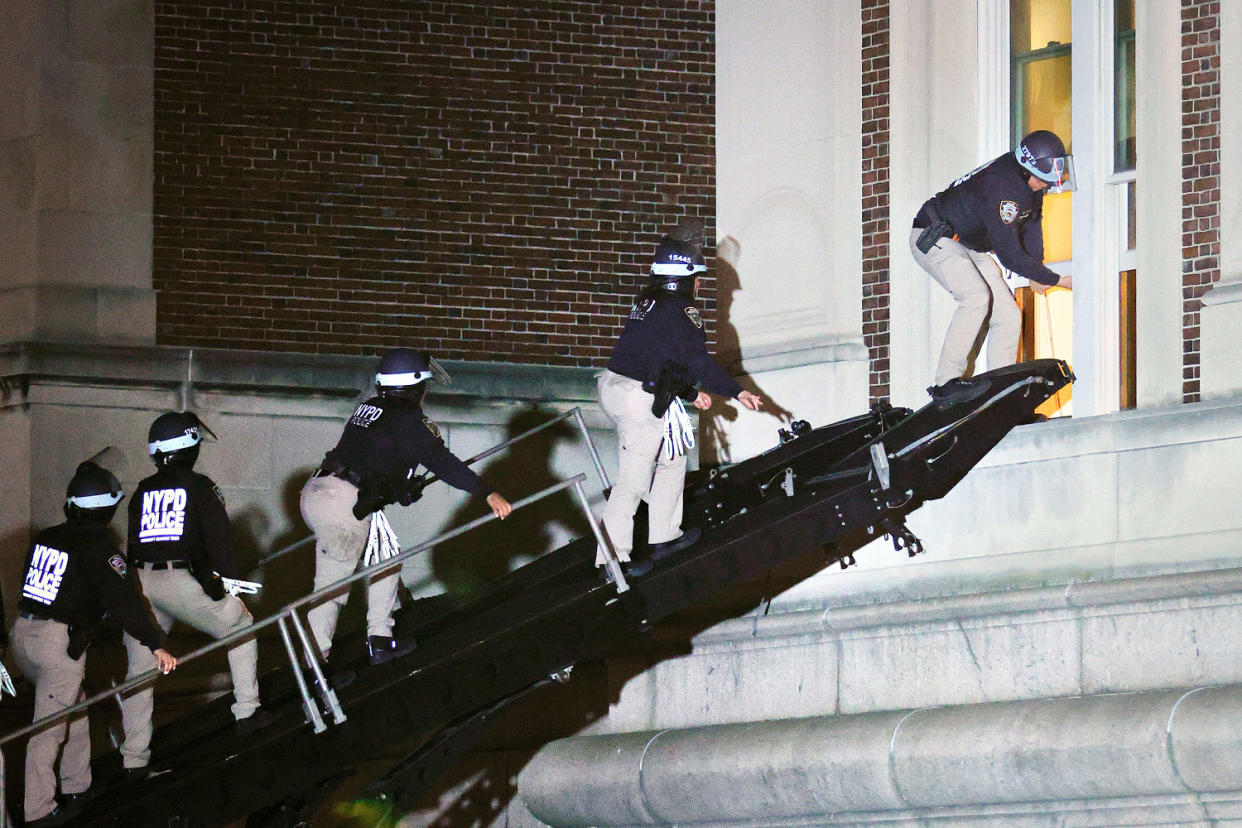
Perhaps sensing that the tide was turning against them, people in the crowd outside the gate suddenly began thinning out. But they didn’t go quietly.
“How do you f—g sleep at night?” a protester screamed at the police.
"Go back to Staten Island," yelled another, referring to the New York City borough that is home to many police officers and firefighters.
As that was going on, the first of the police buses packed with arrested protesters pounding on the windows with their bound hands departed for downtown.
Meanwhile, the police action at Hamilton Hall was underway.
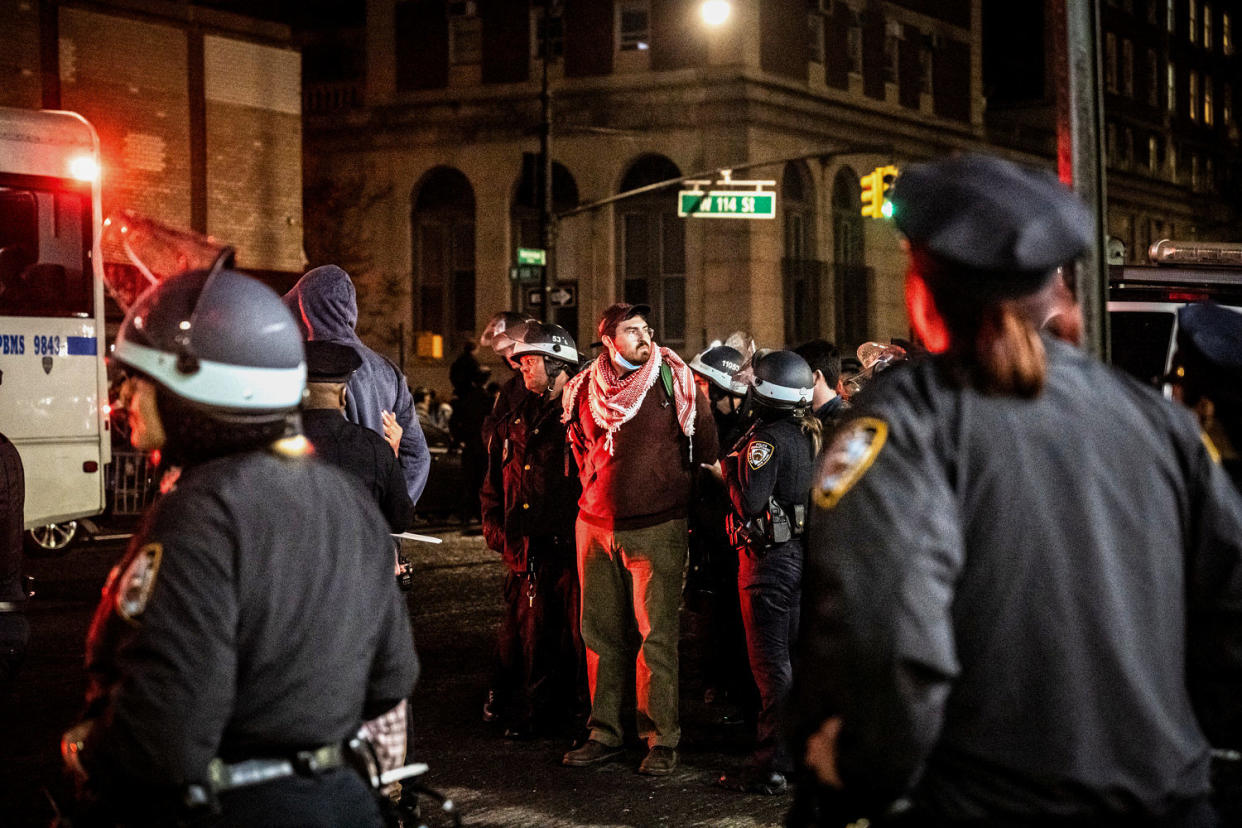
The protesters inside Hamilton Hall had also blocked the inside stairs and entryways with furniture, including vintage wooden school chairs with attached writing surfaces that looked like they had been there the last time the building was taken over in 1968.
Police officials told NBC News they had expected the protesters to move to the upper floors. Instead, they stayed on the first floor, where they were all arrested.
But to reach them, the officers had to dismantle the barricades and pass the furniture from officer to officer to clear their path inside, images supplied by the NYPD showed.
Officers breached locked doors using hammers and chisels to break the locks.
“Police!” the officers announced as they barged inside the rooms with their flashlights out and their guns drawn, video supplied by the NYPD showed.
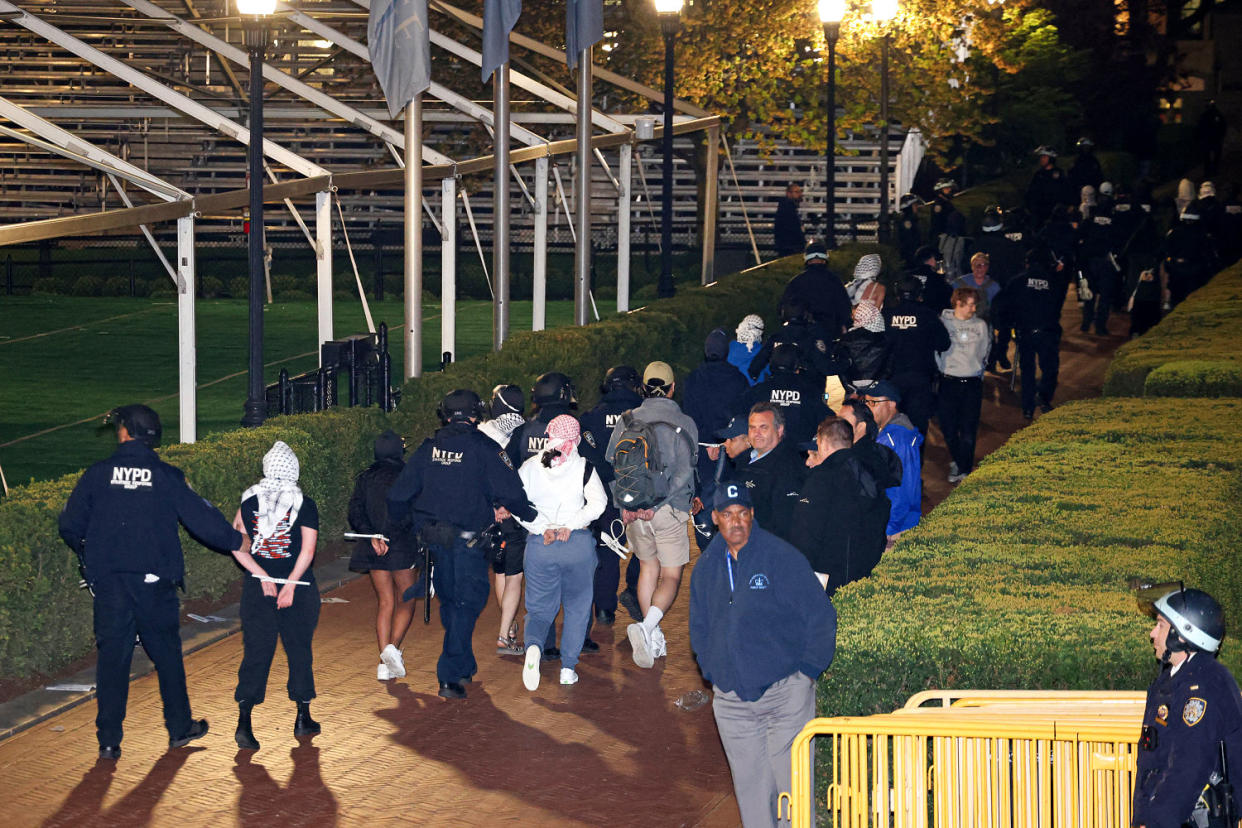
By 11 p.m., police could be seen marching arrested protesters with their hands bound out of Hamilton Hall.
It wasn’t immediately clear whether the protesters put up a fight. Only two were transported to a nearby hospital with what were described as minor injuries, and one was treated at the scene, the New York City Fire Department reported.
Later, after the siege of Hamilton Hall was over, the NYPD released images of what was left behind — furniture stacked in elevators, overturned tables, smashed windows, the jetsam of discarded clothing and food that the protesters had managed to accumulate in just one day.
Students who had been trapped in their dorms during the police action were allowed to leave their buildings around 11 p.m.
Chris Mendell, who lives in Ruggles Hall, told NBC News earlier that the police blocked their doors and warned they would be arrested if they ventured outside.
“So they’re not letting us do anything but sit here,” he said.
